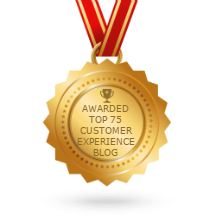Most companies want to secure more customer experience (CX) feedback but face challenges achieving this goal.
Several feedback gathering options exist, each with their pros and cons and specific set-up and administration costs. Picking the right CX feedback gathering method—or right mix of methods—is not always straightforward.
Most businesses benefit from a multi-modal approach that features a blend of SMS, IVR, and email/web surveys. However, in earlier stages, CX programs may need to rely on one or two core methods, with the vision of a multi-modal approach.
To help you make the right choices for your CX program now—and plan for the future—here are quick facts about the 3 most popular feedback gathering methods.
1) Email / Web
Email holds stature as the most prominent method of CX feedback collection. Here’s why:
- The technology is easy to develop
- Administration costs are low
- The cost of feedback collection over time is relatively low
However, email-based feedback collection has a few downsides:
- Response rates are generally lower than other channels—averaging 5% to 15%
- Customers can easily miss email survey invitations in overcrowded inboxes
Another challenge with email surveys is that they typically involve a two-step process:
- Customer opens email survey invitation
- Customer follows a link to the actual survey to provide feedback
This multi-step approach can frustrate some customers who may want to offer feedback, but find the process cumbersome or time-consuming.
In short, email surveys:
- Empower companies to cast a wide net at a reasonable cost
- Offer a weaker call-to-action and lower response rates compared to other approaches
2) SMS
Text-based feedback collection is harder to administer than email or phone campaigns, but offers clear benefits:
- SMS surveys reach customers on their mobile phones, so offer a strong call-to action.
- People are more likely to read and respond to texts than other forms of outreach.
- Texting is especially effective at capturing feedback from younger demographics.
Because of these factors, SMS surveys achieve impressive response rates—ranging between 15% and 35%.
When implementing SMS surveys, companies can choose between two models:
- Back-and-forth conversational surveys that mimic the way people converse via text message
- SMS survey invitations with a link to a mobile-optimized online feedback site
The first model can collect feedback efficiently, with a few brief survey questions. While the second offers opportunity to ask more questions, it also involves a multi-step process that can deter some customers from participating.
Implementing text-based feedback gathering requires more work than email and may not appeal to older customers. For many businesses, though, the response rates and reach of SMS are invaluable.
3) IVR
Automated IVR surveys operate on the same premise as ”back-and-forth” SMS surveys. They gather quantitative and qualitative feedback through conversation.
IVR surveys have been a key feedback gathering method for many years—and remain in wide use today. With IVR surveys, companies can:
- Capture post-interaction feedback immediately after a customer call with a contact center
- Walk customers through questions in a conversational format to continue a dialogue between customer and brand after the point of sale
- Nurture and maintain customer engagement by reaching customers on their home or cell phones
- Achieve 15% to 35% response rates
In general, older demographics prefer IVR surveys over SMS or email feedback collection methods. So companies with a broad customer base may gain the strongest results by using a blend of SMS and IVR.
Craft a Unique CX Feedback Gathering Vision
After analyzing the pros and cons of each feedback gathering method, companies can create a strategy that works for their specific business needs. There is no one-size-fits-all “right way” to gain customer feedback.
Understanding customer demographics and how those groups prefer to engage with brands is often a good first step. Companies also need to keep an eye on emerging trends—such as hybrid feedback collection that uses multiple modes to seek feedback from a single customer.
Weighing these and other factors can help brands craft an “as-is” and a “to-be” view of their CX program along with specific action steps to achieve their CX vision.
Author: Chip James
Chip James is President of eTouchPoint, a pioneering customer experience (CX) technology provider that has provided solutions to Fortune 500 leaders for 15+ years. A CX industry veteran, Chip has been a leading CX advocate through speaking engagements and development of industry best practices. Prior to his work at eTouchPoint, Chip held leadership roles at Commercetel, Qualistics, and CGI. He completed his undergraduate degree at the University of Virginia and holds an MBA from Georgia State University.


